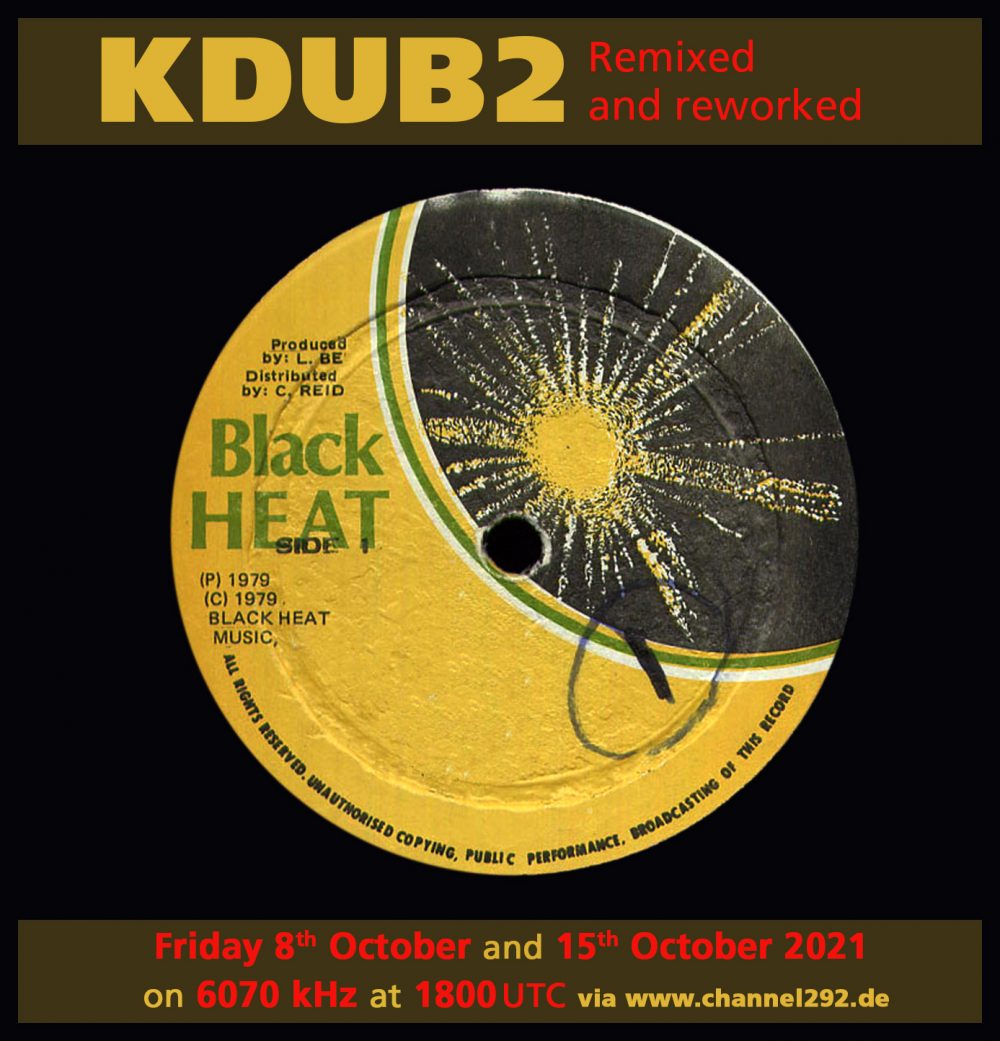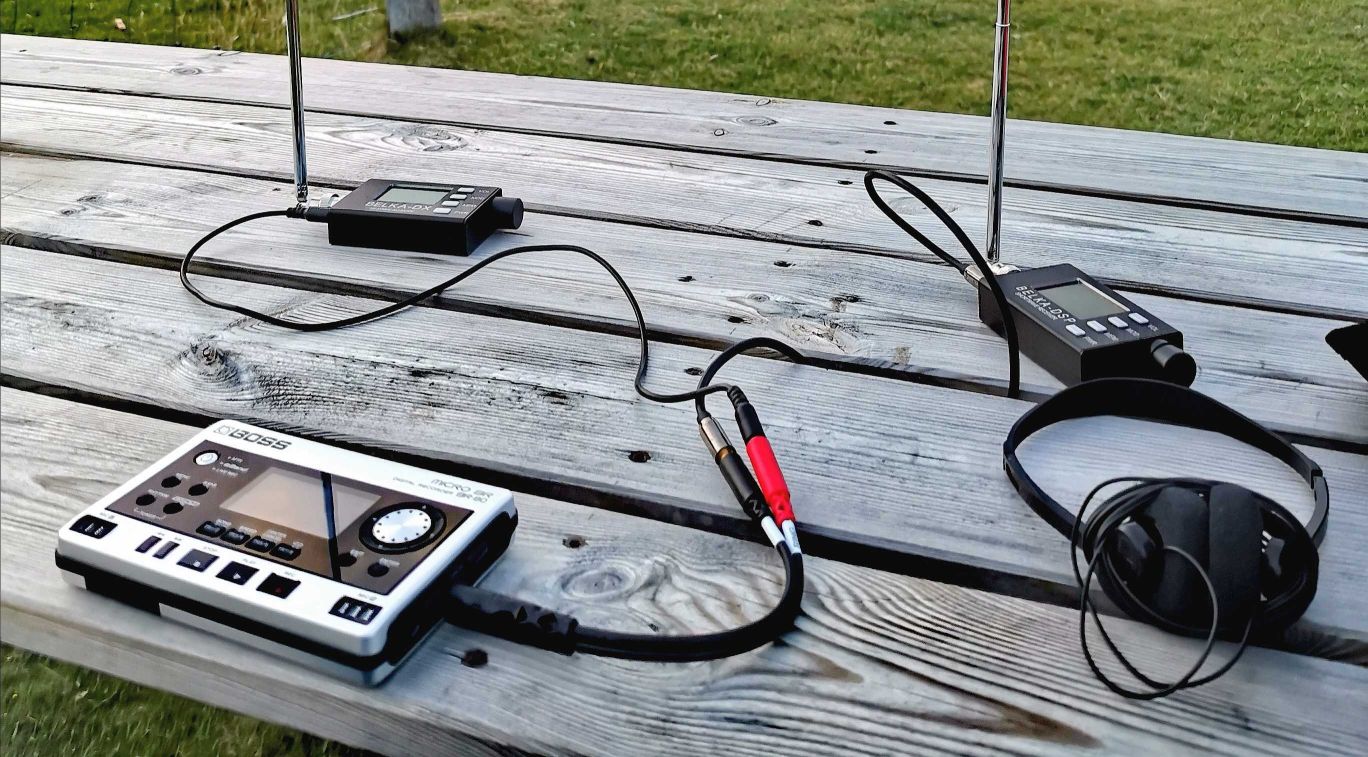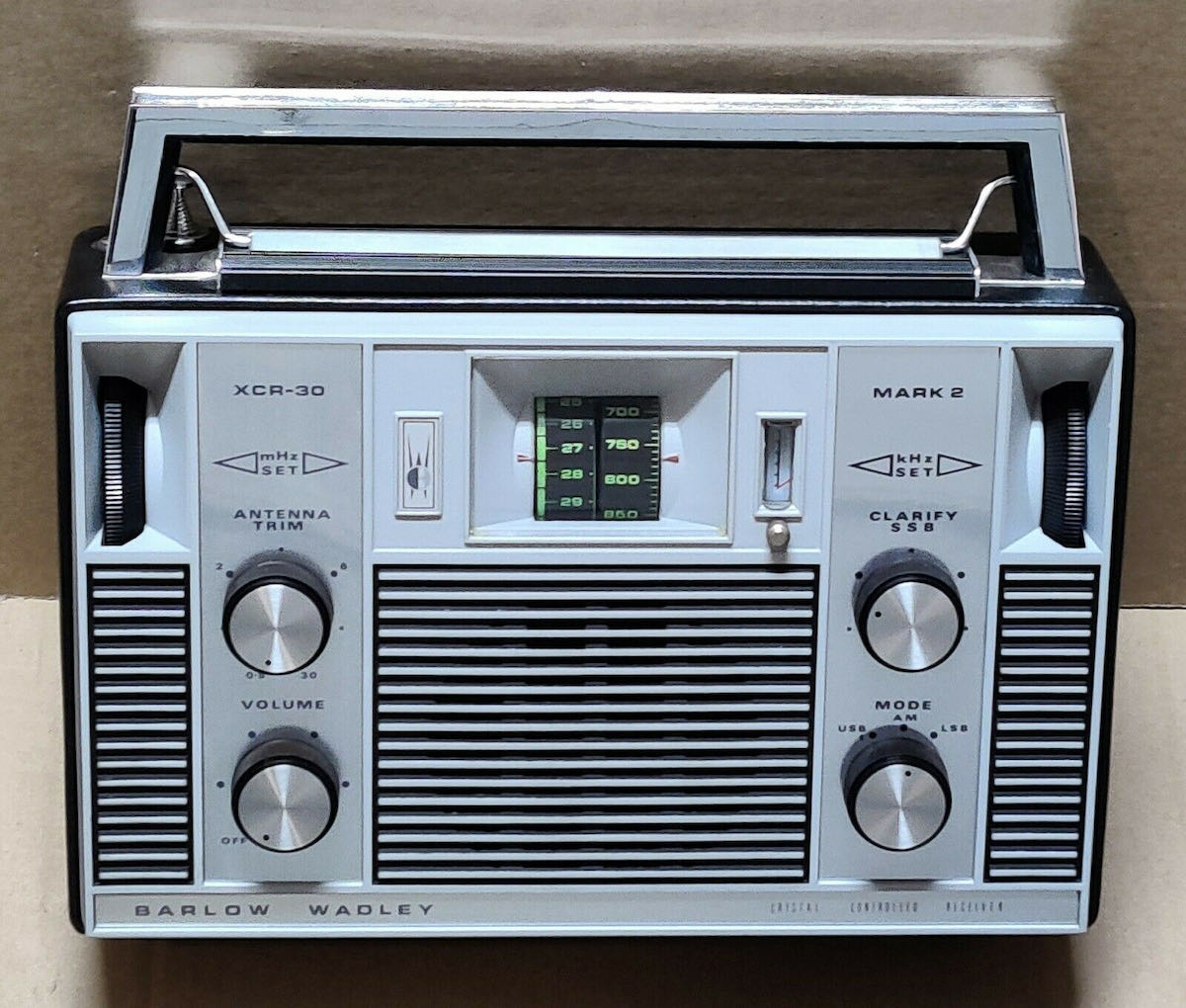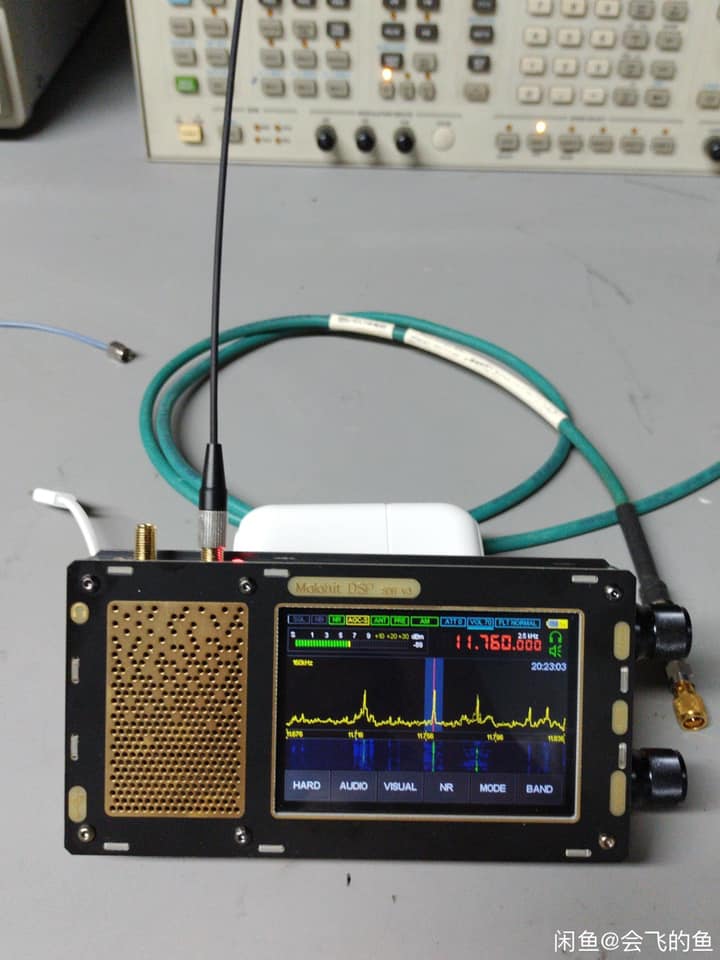Many thanks to SWLing Post contributor, Fastradioburst23, who shares the KDUB flyer above announcing their broadcasts on October 8th and 15th, 2021, at 1800 UTC on 6070 kHz via Channel 292. Mark your listening calendar!
Radio Waves: Skyworks Acquires Silicon Labs, DRM Response to RW Article, CNN finds Radio Biafra, and Free Online Foundation Course
Radio Waves: Stories Making Waves in the World of Radio
Because I keep my ear to the waves, as well as receive many tips from others who do the same, I find myself privy to radio-related stories that might interest SWLing Post readers. To that end: Welcome to the SWLing Post’s Radio Waves, a collection of links to interesting stories making waves in the world of radio. Enjoy!
Many thanks to SWLing Post contributors Troy Riedel, Dan Robinson, and the Southgate ARC for the following tips:
Skyworks completes acquisition of the infrastructure & automotive business of Silicon Labs (Skyworks)
IRVINE, Calif.–(BUSINESS WIRE)–Jul. 26, 2021– Skyworks Solutions, Inc. (Nasdaq: SWKS), an innovator of high-performance analog semiconductors connecting people, places and things, today announced that it has completed its acquisition of the Infrastructure & Automotive business of Silicon Laboratories Inc. (Nasdaq: SLAB) in an all-cash asset transaction valued at $2.75 billion.
“On behalf of the entire Skyworks organization, I want to welcome the Infrastructure & Automotive team,” said Liam K. Griffin, chairman, chief executive officer and president of Skyworks. “In addition to a strong legacy of innovation and execution, the I&A business brings a highly diversified customer base that will enable our continued expansion into strategic end markets. Together, we will accelerate profitable growth in key industry segments, including electric and hybrid vehicles, industrial and motor control, power supply, 5G wireless infrastructure, optical data communications and data center.” Continue reading
Guest Post: A synchronous detector crash course!
Many thanks to SWLing Post contributor, 13dka, who shares the following guest post:
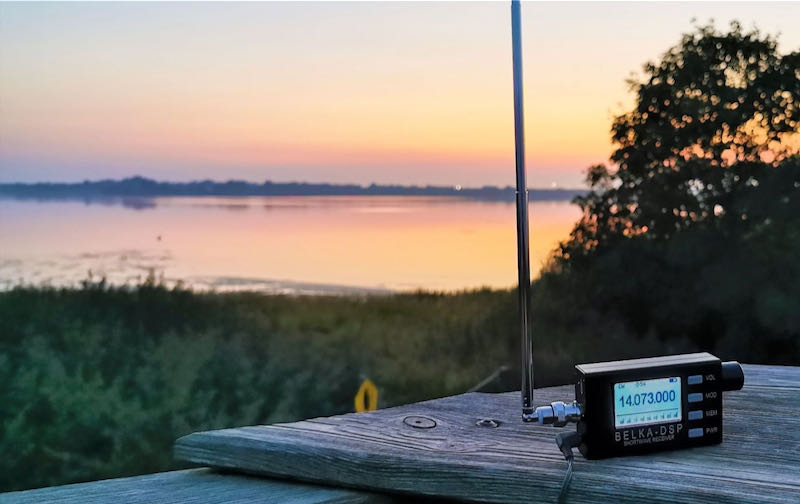 Revisiting the Belka’s “pseudo-sync detector”: A sync detector crash course!
Revisiting the Belka’s “pseudo-sync detector”: A sync detector crash course!
by 13dka
“It’s usually hard to assess whether or not a sync detector helped with a particular dip in the signal or not, unless you have 2 samples of the same radio to record their output simultaneously and compare.”*
That’s what I wrote about the “pseudo sync detector” in my review of the Belka DSP last year.
Since I was recently upgrading to the Belka DX in order to pass on the Belka DSP to a friend, I had briefly two examples of almost the same radio on the table at the dike. I tuned them to the same stations and recorded some audio clips with one radio on sync detector, the other in regular AM mode, to answer the question whether or not sync has “helped with a particular dip in the signal”. Then I thought that demonstration would be an opportunity to try an explanation on what exactly (I think) sync detectors are all about anyway, hoping to find a middle ground between “technical” and “dumbed down beyond recognition”.
The trouble with sync detectors
Perhaps no component of a shortwave receiver is surrounded by so much misconception and confusion as sync detectors. Full disclosure: Until quite recently, I had an, at best, vague concept on what they do myself. It seems it’s not so much that people don’t know how they work, what they actually do when they work is where the ideas often diverge. Continue reading
Paul wants to know: How do you store your radios?
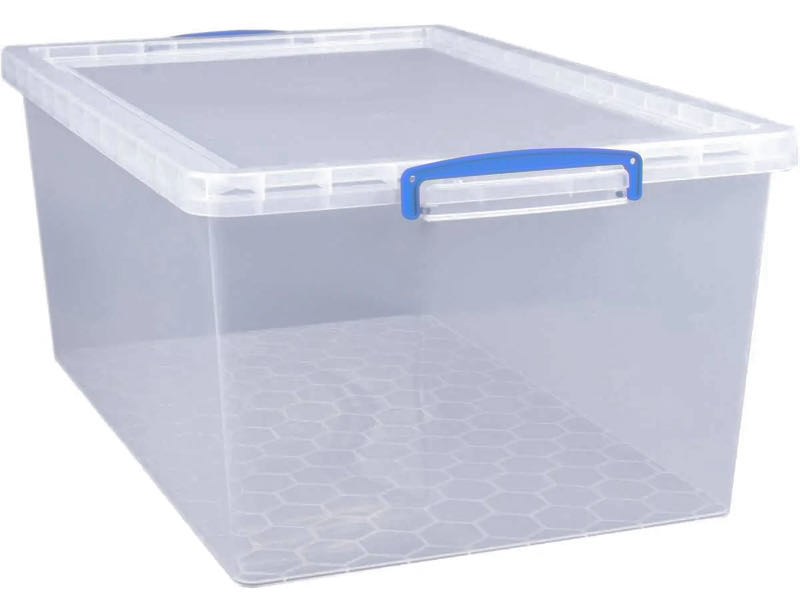 Many thanks to SWLing Post contributor, Paul, who writes:
Many thanks to SWLing Post contributor, Paul, who writes:
This may be a good discussion question on your great blog.
Basically, I am curious to learn where and how do people store their various radios – I think it’s safe to say that many of us have more than 5 or 10. Do you use bookshelves? TV stands? Those storage cube organizers? Custom shelving on the walls? It will be interesting to know …
All the best
Paul
I think this is a great question, Paul.
Personally, I have a lot of portables, so storage is definitely an issue. Since I do radio reviews, many models aren’t ones I use daily but I keep them for comparison reviews and for using in rotation.
The first thing I do when I store a radio is remove its batteries if it takes traditional cells (like AA, AAA, C, or D batteries). I remove them to prevent them from leaking and corroding the battery terminals. Even though I’ve migrated the Eneloop batteries (for AA and AAA), I still remove them for storage.
I built custom shelves into my office to accommodate large standard size clear storage containers; I believe the ones I have originally came from IKEA. I store all of my portables in those containers with a little padding or their original box to keep them from getting scratched up.
This system has worked for me very well over the years, but I’ll admit that I wish my small office had more shelf area for radios on display!
Readers: How do you store your radios when not in use? Please comment!
eBay find: Mint NOS Barlow Wadley XCR-30
Many thanks to SWLing Post contributor, Robert, who writes:
Thomas – Check out this NOS Barlow Wadley XCR-30 on eBay. I have never seen one of these in this condition!!
Photos
Listing Description
Offered is a MINT condition, brand new Barlow-Wadley XCR-30 Mark 2 receiver manufactured in 1974. This particular unit is in the original box, has never been used and is in pristine shape. It’s just like someone would have received it when buying it new nearly 50 years ago. Until a few months ago, it was still sealed in the original plastic and my initial intention was to leave it like that. However, the tape on the plastic had become brittle with age and no longer was adhering to the plastic. I therefore decided to remove the receiver long enough to get a series of photos and carefully placed it back in the plastic. All original accessories and documentation are included: one bag with the operating instructions, original warranty (guarantee) card, and extra log cards; another bag with the the plugs for the user to make the following items: grey plug (earphone), red banana plug (external antenna), black banana plug (grounding/earth), and grey plug (external power supply).
If you are searching specifically for an XCR-30, it’s most likely you know that this receiver was considered state-of-the-art and rather famous when first manufactured. The receiver uses what is known as a Wadley loop which is a clever method of obtaining frequency stability. There are various articles online which go in to greater detail regarding this receiver as well as the theory and significance of the Wadley loop. This receiver has a frequency range of 500 kHz to 30 MHz and which is covered in 30 separate bands of 1 MHz each.
Due to the age of this receiver it is being sold as-is with no guarantee of its operability in the future. Also, it is very much recommended that it be properly serviced prior to any attempt at powering up. At a minimum, all electrolytic capacitors should be replaced.
This receiver will be well packaged with extra layers of cardboard and packing peanuts around all sides, top and bottom for protection during shipping.
On Sep-20-21 at 18:39:31 PDT, seller added the following information:
Please note: I have NOT installed any batteries into the receiver. That’s what “never used” means in the title and description.
Wow! What a find, Robert. Thank you for sharing it with us. I bet this listing will go much higher in price–it’s rare to see a mint NOS Barlow Wadley XCR-30 on eBay. I would love an XCR-30 some day, but this will surely go beyond my bidding comfort level! Indeed, I’m very curious how high it will go!
HFDY vs. Fire Brothers: Dan compares two Chinese Malahit SDR clones
Many thanks to SWLing Post contributor, Dan Robinson, for the following guest post and review:
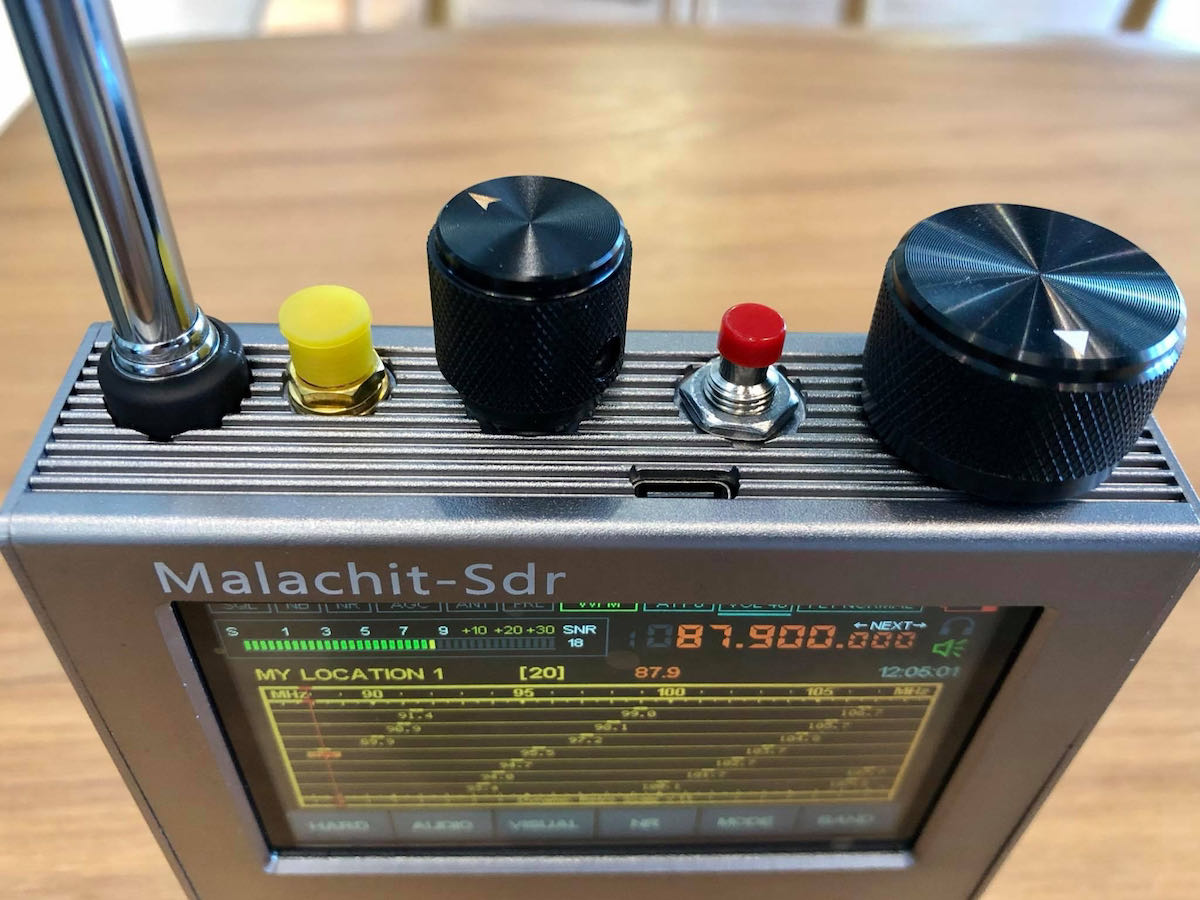 Two Chinese Clones: A Look at Noise Levels
Two Chinese Clones: A Look at Noise Levels
Arriving recently here in the radio shack, were a Chinese clone under the name of “Fire Brothers” and another under the name HFDY. I thought it would be constructive to note the key differences between these two clones, both of which are running Malahit 1.10c firmware, and post some video of a brief comparison.
A note in advance of any comments – I am primarily a HF listener so these comparisons do not cover frequencies above 30 MHz. For those whose focus is on higher frequencies I recommend looking through the many comments on the Malahit Facebook group and Telegram by those who use these receivers in those ranges.
HFDY
- Constructed of metal-like material (a correction from my previous articles that this is fiberglass of the kind used in printed circuit boards – thanks to Georgiy of Malahiteam for pointing this out)
- Front speaker grille is gold color and appears to be metal but may be fiberglass as well – audio is quite good
- Two top-mounted antenna jacks, one 50 ohm, the other Hi-Z (makes switching between HF and FM/VHF reception easier) with in-use LED indicators
- Two high quality right side mounted black metal encoder knobs with large power button (clear printed Frequency/STDBY/Volume printed on panel)
- Cabinet held together with TORX screws
- 1.10c firmware
- Receiver is elongated left to right to accommodate left side front-firing speaker, but is thinner overall and could be easily placed in a pocket though not recommended to prevent damage
- Like every one of these SDRs, suffers from body sensitivity to touch which reduces signal levels unless some sort of additional ground is attached to cabinet
- Internal flat-type Lithium battery of 3300 mAh though apparently capable of fitting up to 8000 mAh
Guest Post: A “Horizontal DXer” explores the CC Skywave SSB and PL-880
Many thanks to SWLing Post contributor, Jock Elliott, who shares the following guest post:
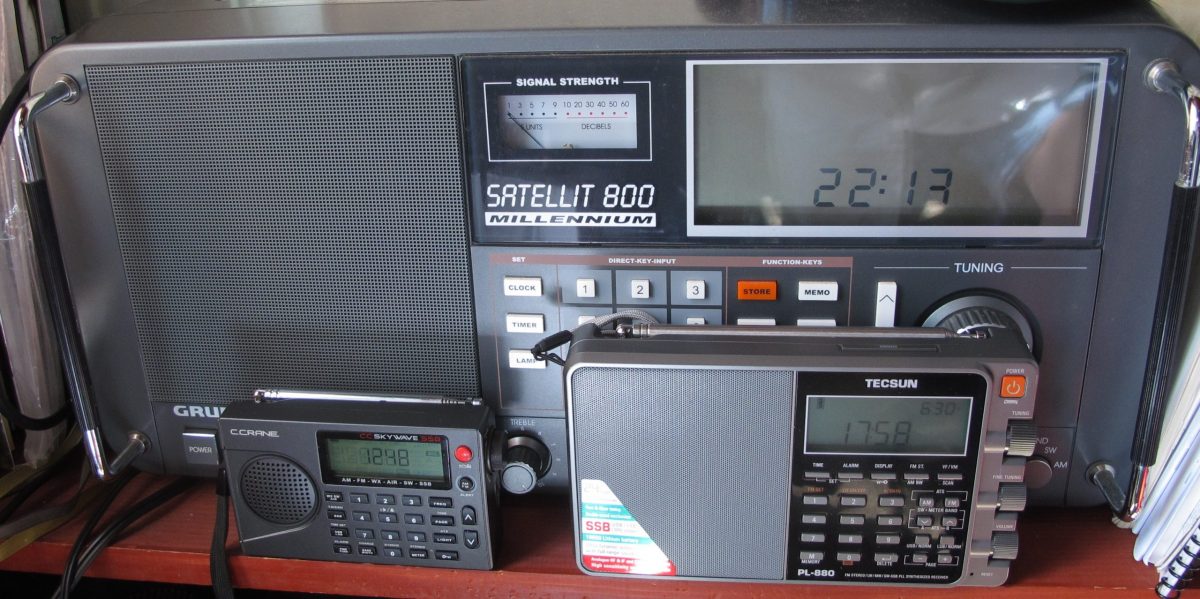 Confessions of a horizontal DXer and some initial impressions of the Tecsun PL-880
Confessions of a horizontal DXer and some initial impressions of the Tecsun PL-880
by Jock Elliott
Back in the day when I wrote for Passport To World Band Radio, one of my favorite things to do, while my better half drifted off to sleep, was to clamp on a pair of headphones, lean back against the pillows, and mess around with a Sony 6800W shortwave receiver.
It wasn’t a radio that was built for band scanning: you had to rotate a dial to select the megahertz segment of the bands that you wanted, tune a built-in preselector to the appropriate area, and then dial in the frequency with a tuning knob. And memories? Ha! You want memories?!! There were no stinking memories . . . you had to remember what frequencies you wanted or at least what portions of the bands you wanted to tune. The memories were between your ears.
But it was a receiver with an extraordinarily low noise floor, and many a happy evening I enjoyed programming from half a world away. Drifting off to sleep with headphones piping in a signal from a distant land was not without its dangers, though. One night I fell asleep listening to the news from Radio Australia beamed, in English, to Papua, New Guinea. I woke a while later to the same newscast beamed to Papua, New Guinea, but this time in Pidgin English. I heard some English words, but the rest did not make sense. I panicked, thinking some neurologic event had scrambled my brain, but a crisp voice rescued me: “This has been the news in Pidgin English, from Radio Australia.” Thank God!
When Passport ceased publication, I neglected shortwave radio for over a decade, busy with freelance writing and running the Commuter Assistance Net on two meter ham radio.
Earlier this year, the SWLing bug bit me again, and I fired up a long-neglected Grundig Satellit 800 and started cruising around the HF frequencies. Many of the big-gun shortwave stations were gone, or they weren’t aiming programming at North America, but there was plenty to listen to, including shortwave stations, HF ham bands, and some utility stations.
Gee, I thought, it might be great to have a radio for a little horizontal in-bed DXing before shutting off the lights for the night . . . something I could hold in my lap, turn the tuning knob, and discover hidden treasures. The Satellit 800, emphatically, was not the answer. It is a large radio, roughly the size of the vaunted Zenith Transoceanic radios, and definitely not suited for laps.
So, based on a great reputation and excellent reviews, I bought a CCrane Skywave SSB. The Skywave SSB is a powerhouse, offering AM, FM, Weather, Air, SW, and SSB in a package roughly the size of a deck of cards and perhaps twice as thick. And it delivers the goods, offering worthy performance on every band, although SW performance is greatly enhanced by attaching the wire antenna that is included with the Skywave SSB.
Two factors, I discovered, reduced the suitability of the Skywave SSB for bedside DXing. First, the tuning knob is really small, so you can’t just twirl your finger to traverse the bands. It also has click-detents on the tuning knob and muting between tuning steps, so the tuning is non-continuous, which diminishes the pleasure for me. So the drill becomes: use the automatic tuning system (ATS) to search the bands and store stations in memory and then use the keypad buttons to jump from stored station to stored station. Further, each keypad key makes a distinct “click” sound when properly depressed. And that brings us to the second factor: one night, I am attempting to explore the stations stored by the ATS when my bride, who was trying to doze off, taps me. “What?” I say. “Too much clicky-clicky,” she says. Oh, I thought; now I need to find a radio that is quiet, so long as I am wearing headphones.
Now, just to be clear: I would highly recommend the CCrane Skywave SSB (except for use next to a spouse who is attempting to sleep), particularly for traveling because it is so small and performs so well. To underscore the value of a shortwave-capable travel radio, some years ago, I spoke with a journalist who was in Russia when the Chernobyl nuclear disaster took place. Russian media were not reporting on it at all; he found out about Chernobyl by listening to the BBC on a shortwave radio he had tucked into his luggage, and he rapidly made plans to leave Russia.
A bunch of research eventually led me to the Tecsun PL-880, which is about the size of a trade paperback book. According to some reviewers (including Dan Robinson), the 880 is a bit more sensitive and shortwave than the PL-990. The 880 offers a bunch of bandwidths on both AM and SSB, and the tuning is butter smooth with no muting or detents. The smallish tuning knob has a bit of knurling on the edge, which make it possible to twirl the knob with one finger; you can fine-tune SSB with another knob, and, with one button-press, use the tuning knob to select filter bandwidths or memory channels. In short, if you avoid the keypad, this is a radio that can be operated in near silence next to a better half who wishes to snooze.
The performance, so far, is exemplary; using the PL-880 whip antenna, I could readily hear Gander, Newfoundland, broadcasting aeronautical weather as well as Shannon, Ireland, air traffic controllers directing aircraft crossing the Atlantic Ocean. Yes! I haven’t yet begun to explore all that the PL-880 can do, but it promises to be a lot of fun.

